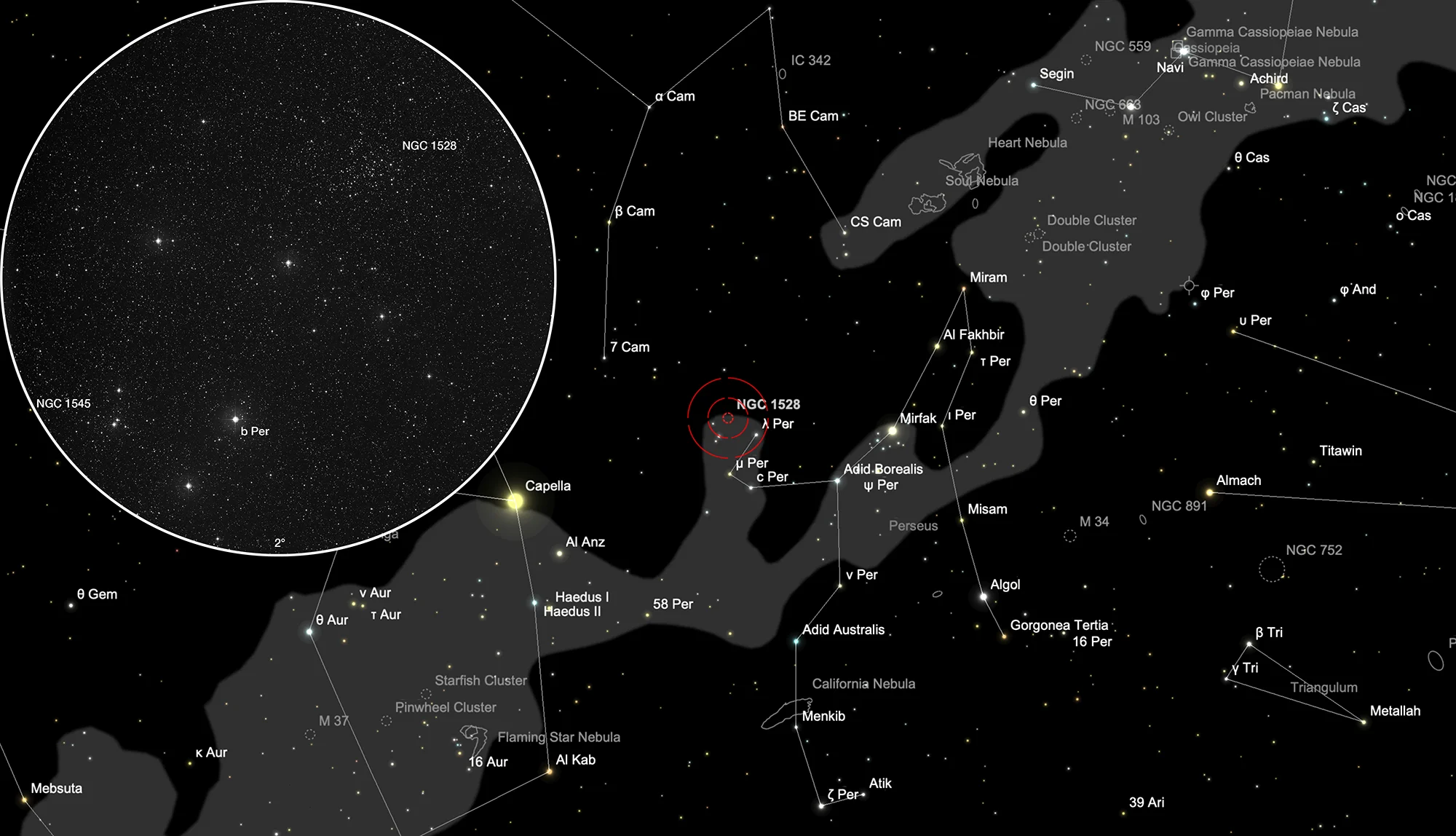Open Clusters NGC 1528 & NGC 1545

History
The open clusters NGC 1528 (VII 61) and NGC 1545 (VIII 85) were discovered on 28 December 1790 by William Herschel using his 18.7-inch reflecting telescope. For VII 61 he noted: «A beautiful cluster of large stars, very rich, and considerably compressed, about 15' diameter.» For VIII 85 he noted: «A coarsely scattered cluster of large stars, pretty rich.» [465]
Physical Properties
| Name | RA | Dec | Type | vMag | Dim | MD | Dreyer Description | Identification, Remarks |
|---|---|---|---|---|---|---|---|---|
| NGC 1528 | 04 15 19.0 | +51 12 42 | OCL (II2m) | 6.4 | 18 | 0.776 | Cl, B, vRi, cC | WH VII 61; GC 820; OCL 397 |
| NGC 1545 | 04 20 56.2 | +50 15 19 | OCL (II2p) | 6.2 | 12 | 0.711 | Cl, pRi, lC, st L | WH VIII 85; GC 831; OCL 399 |
Finder Chart
The open clusters NGC 1528 and NGC 1545 are located in the constellation Perseus. The Little Pacman Nebula NGC 1491 is about 2° towards west of NGC 1528. The best observation time is July to April, when they are highest at night. At about 28 November they are in opposition to the Sun and cross the meridian at local midnight.
